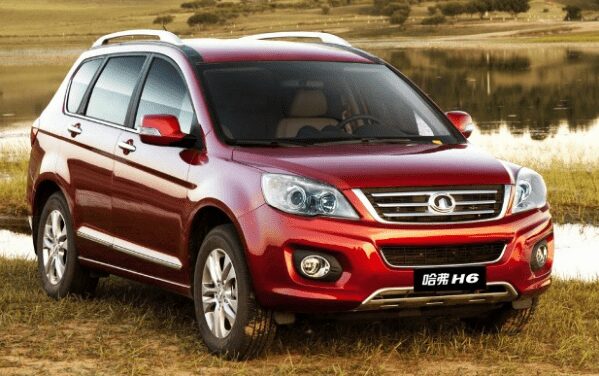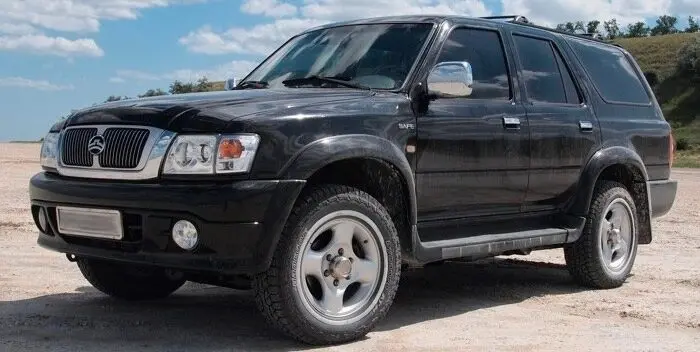
History of the Great Wall car brand
Content
Great Wall Motors Company is China's largest automobile manufacturing company. The company got its name in honor of the Great Wall of China.
This relatively young company was founded in 1976 and has achieved tremendous success in a short period of time, establishing itself as the largest manufacturer in the auto industry.
The first specificity of the company was the production of trucks. Initially, the company assembled cars under license from other companies. Later, the company opened its own design department.
In 1991, Great Wall produced its first commercial van.
And in 1996, based on a model from the Toyota Company, she created her first passenger car, the Deer, equipped with a pickup body. This model is in good demand and is especially common in the CIS countries.
Over the years, the Deer family already has many upgraded models.
The first export took place in 1997 and the company entered the international market.
With the beginning of the new century, Great Wall creates a division for the development of powertrains for future models of the company.
Soon the form of ownership of the company also changed by placing its shares on the stock exchange, and now it was a joint stock company.
In 2006 Great Wall enters the European market, exporting models such as the Hover and Wingle. The export of these two models was significantly larger, with more than 30 units of the Hover being exported to Italy alone. These models were dominated by quality, reliability and affordable price. These characteristics have generated demand. There have been improved versions in the future.
Based on several older models, the company introduced the Voleex C2010 (aka Phenom) in 10.
The modernization of Phenom led to the emergence of the Voleex C20 R off-road vehicle. The company's off-road vehicles took an active part in racing competitions, showing fairly high performance.

The company has also entered into numerous contracts with leading technology firms like Bosch and Delphi, using their technologies to further improve vehicle production. Also, several branches were opened in different countries.
In early 2007, he creates projects for the creation of a minivan and new models of minibuses, which were soon presented to the world with high technical characteristics.
Soon, the company ousted the Chinese auto industry, becoming the leader and occupying almost half of the entire Chinese car market, as well as half of the Thai one. The Coolbear touring car was in great demand in Thailand.
The company expanded and another factory was built.
An unsuccessful attempt was made to acquire shares in Daihatsu, which is a Japanese automaker. This did not happen, and the Great Wall eventually fell under the influence of the Toyota Company.

At the moment the company is rapidly flourishing and there are already more than twenty branches. The company also has several centers specializing in the research and development base for the introduction of new technologies. In a short time, the company has gained not only the popularity of the Chinese market, becoming a leader, but also gained success internationally, exporting its cars to more than 100 countries around the world.
Emblem
The history of the creation of the emblem personifies itself as the Great Wall of China. A huge idea of invincibility and unity before a great goal is embedded in the small Great Wall emblem. An oval frame with a wall-shaped arrangement inside is made of steel, denotes the company's thriving success and its invincibility.

Great Wall Car History
The first company car was produced by a commercial vehicle in 1991, and in 1996 the first passenger car with a pickup truck, the Deer model, was produced, developing it to subsequent versions from G1 to G5.
The G1 featured two doors and was a two-seater rear-wheel drive pickup truck. The Deer G2 had the same characteristics as the G1, but what set it apart was that it was five-seater and had a longer wheelbase. The G3 had 5 seats and was already 4 doors, and was also equipped with all-wheel drive like subsequent models. There is no particular difference with the release of the subsequent G4 and G5, except in the dimensions of the car.
The company's first SUV was launched in 2001 and immediately exported to the market. The model was named Safe.

In 2006, the world saw an off-road vehicle belonging to the SUV class. The crossover possessed a number of high technical indicators from the power of the power unit to the manual transmission. The upgraded model of the same Wall SUV series was equipped with great comfort, and a lot of attention was also paid to the car's interior.
The collaboration with Bosch has created the Wingle, equipped with new technologies, a pickup truck body and a diesel power unit. The model has been released over several generations.
Florid and Peri are passenger cars released in 2007. Both had a hatchback body and a powerful engine.
The Coolbear tourism vehicle has gained popularity in the Thai market. Released in 2008 and equipped with innovative technologies and an impressive maximum comfortable car interior with a huge trunk and amenities.

The Phenom or Voleex C10 rolled off the assembly line in 2009 and was created on the basis of older models with a powerful 4-cylinder power unit.
In 2011, the Hover6 kicked off as the company's best-selling car.
The M4 model won the attention of the public in 2012 with its excellent design and technical characteristics.